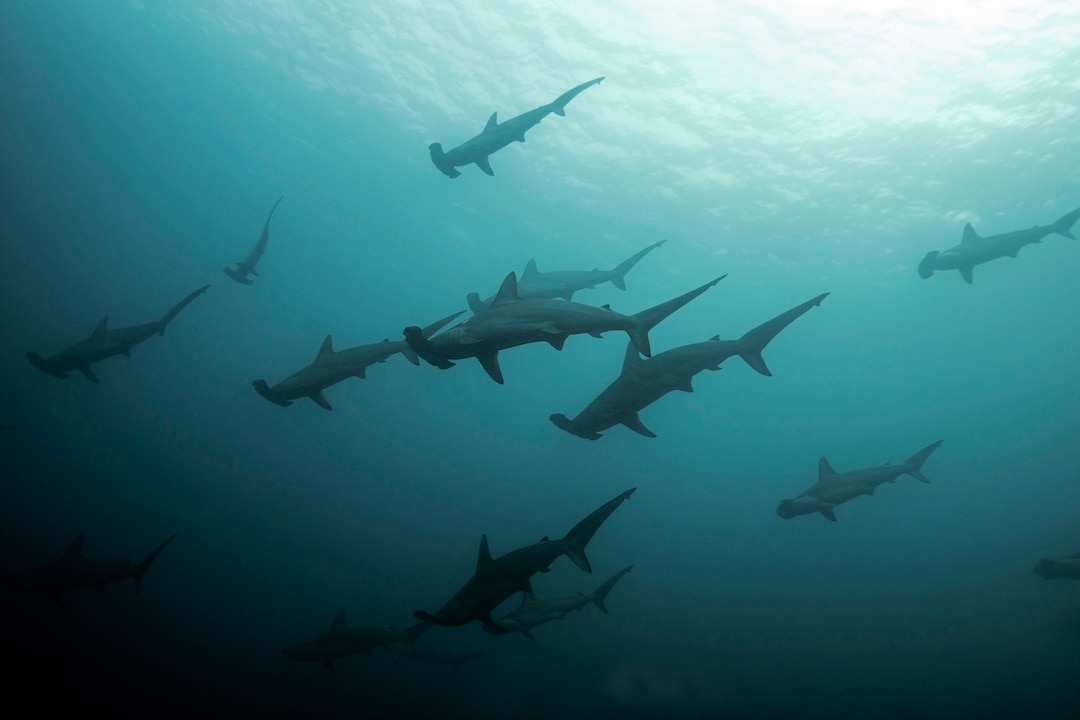Create a free profile to get unlimited access to exclusive videos, sweepstakes, and more!
How Baby Hammerheads Grow Their Weird Tool-Shaped Heads
How exactly did hammerhead sharks evolve?

The 2012 human vs fish flick 2-Headed Shark Attack (streaming now on Peacock) proves the age-old adage that two heads are better than one, in truly bloody fashion. An unfortunate group of sailors aboard the vessel Sea King is attacked by a great white shark with double the heads, double the teeth, and double the excitement! At least for those of us watching at home.
The fictional two-headed white shark’s methods were flawed, but it had the right idea, spreading the head out in two different directions can give sharks an advantage over prey and peers. We only need to look at hammerhead sharks for proof. Precisely how hammerheads built some of the most iconic headgear in the seven seas has been something of a mystery. Now, scientists have a better idea of how hammerhead sharks evolved, by looking at how embryos grow their characteristic heads during development.
How Did Hammerhead Sharks Evolve?
Hammerheads are arguably the most distinctive of all living sharks. Where the bodies of most sharks take slight variations on the same basic form, hammerheads take a sharp turn in both directions. That development is a relatively recent one in the story of shark evolution.
Sharks have been roaming the seas of the world in some form or another for 450 million years, longer than there have been trees on the planet and longer than Saturn has had rings. Hammerheads only showed up about 20 million years ago, the youngest of all known shark groups. Today, there are 10 species, all of which descended from that first tool-shaped ancestor.
For More on Sharks:
Longest-Living Vertebrate Ever? Greenland Shark Thought to Be 393 Years Old, Give or Take a Century
A South African Killer Whale Took on a Great White Shark One-on-One and Won
Drone Footage Snaps Up the First Known Baby Photos of a Great White Shark (Probably)
Despite being relatively easy to find, we don’t know much about how hammerhead embryos grow and how they develop their distinctive head shape. Some shark species lay eggs outside the body, allowing scientists to watch embryonic development happen in real time. Other types, like white sharks or hammerheads, keep the eggs inside the body and give birth to live young. That allows the mother to better protect her young during gestation, but it makes hammerhead embryos more difficult to study.
In a recent study, researchers from the University of Florida focused on Sphyrna tiburo, commonly called the bonnethead shark, commonly found in the Gulf of Mexico and the western North Atlantic. They are the smallest known hammerhead shark, coming in at just 4 feet long when full grown. Bonnetheads live on a diet of small fish, mollusks, crab, shrimp, and other invertebrates.
The bonnethead reaches maturity at 2 years of age and mates in the fall. After a 4 - 5 month gestation period they deliver a litter of between 6 and 14 pups, each about a foot long. It’s what happens during those 4 - 5 months that researchers weren’t sure of, until now.
How Hammerhead Babies Grow Their Hammer Heads
To study the embryonic development of bonnethead sharks, scientists relied on specimens accidentally killed during other activities. Any time a pregnant bonnethead was captured, researchers harvested the embryos and took images to catalog what happened at each developmental stage.
Putting those images in a line allowed scientists to create a sort of linear flipbook of bonnethead development. Tracing changes from the earliest stages to just before birth, researchers were able to identify the moment at which the hammer-shaped head, also called a cephalofoil, appeared.
The hammerhead’s cephalofoil gives them some extra advantages over other sharks. It’s believed that the foil gives them a wider field of view by pushing them farther apart. Likewise, they have better sniffers because the cephalofoil provides expanded nasal passages. Additionally, their heads are covered with sensory organs for detecting electrical activity in the water, even signals as subtle as the heart beats of a passing fish.
There’s still a lot to learn but scientists are one step closer to understanding how hammerheads evolved, and pulled off the most dramatic costume change of any shark in tens of millions of years. The only thing cooler might be a…
2-Headed Shark Attack, streaming now on Peacock.























